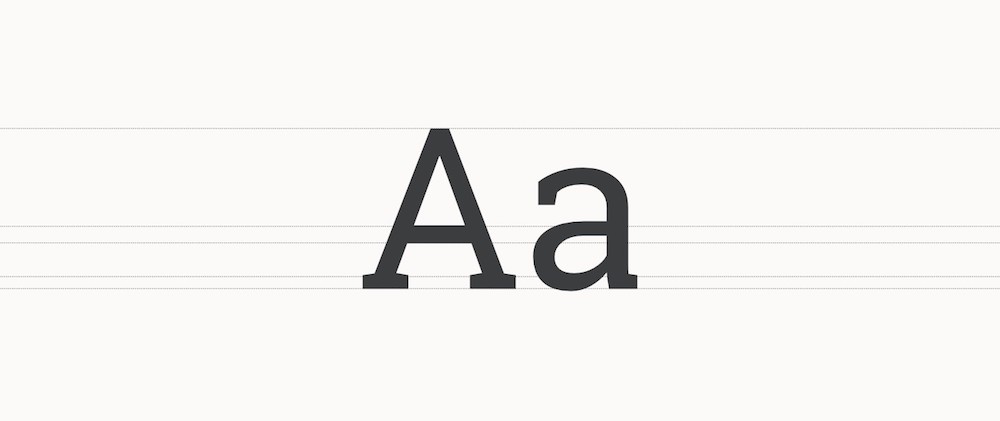Demystifying Recent Web Font Licensing Changes for Retail Sites

Image via blog.po.et
In a year that has already brought a lot of challenges to retailers, many companies are now facing a new issue: the discontinuation of the Monotype Library Subscription. This library provided a wide variety of fonts – and obviously fonts are an essential component of online stores. It’s tough to discern what exactly happened, but to our best knowledge, the Monotype Library Subscription quietly ended in 2019. Since then, remaining clients have been gradually terminated (often without notification) from the plan.
Regardless of the mechanics behind the change, what matters is how it impacts online retailers. Your company may be experiencing this problem first-hand. For instance, have the fonts on your online store suddenly stop working correctly? Or has an uninvited banner advertising “fonts.com” appeared?
Glitches in site fonts will cause issues for your overall customer experience. It may seem easy to simply switch out the expired fonts for new ones, but unfortunately, it’s not that simple. But here’s what you can do to diagnose and solve this emerging problem.
Background: Why Web Font Licensing Is Crucial
Custom web fonts must be licensed for use on the web. There are many free web fonts available from Google. This is the easiest and fastest way of using custom fonts. However, these fonts don’t always serve a retailer’s needs. When that’s the case, fonts must be licensed from a third-party provider. The four main sites for this service are: fonts.com, myfonts.com, fontspring.com, and typekit.com.
Previously, a monthly subscription was available for over 10,000 paid fonts provided by Monotype (a.k.a. the Monotype Library Subscription) for a flat monthly fee. The subscription provided licensed use of web fonts included in the library up to a certain number of views. Pricing varied by pageview limit. In a surprise move for many, however, this service has ended. Thus, merchants are waking up to a “fonts provided by fonts.com” banner on their site or fonts that don’t work at all.
The tough outcome is that now web font licensing becomes an unnecessarily complicated task. Every font (and font weight) must be licensed from one of the four font providers mentioned above. This is complicated by having two different licensing models among these four different font providers. As retailers update their fonts, they can end up with a mix of licensing models on their site.
The Two Different Web Font Licensing Models
As you plan the best path forward for your ecommerce site, it’s important to know the two different fee structures for web font licensing.
- Pay-as-you-go: This license offers use of the font for a flat fee, up to a certain number of total page views. After that page view limit has been reached, the license must be purchased again. For example, let’s say a given font is offered for $49 for 250,000 pageviews. The web font provider tracks pageviews. If a site gets 20,000 pageviews per month, this will run out in 11 months. If a site gets 100,000 pageviews per month, this will need to be renewed in 2.5 months.
- Pay-once: This license offers a one-time up front fee, and provides a website a license to use that font in perpetuity, but up to a limited number of pageviews per month. Let’s suppose that a given font is offered at $59 for 50,000 pageviews per month. In this scenario, the merchant will purchase the license once. So long as their website receives less than 50,000 pageviews per month, they will never have to pay for that license again. If the page traffic increases, however, the license will need to be upgraded.
Can’t I Just Switch My Web Fonts?
At Command C, often clients will ask if we can substitute a similar free font for their previous paid fonts. The answer is: if it were simple, we’d do it in a heartbeat. But unfortunately, fonts are not a simple exchange.
Two different fonts might look similar, but the geometry of each font is unique. Lettering in 12pt in one font can look like 16pt in the other. So, for carefully placed lettering, navigation bars, banners, etc., font sizes must be reviewed and adjusted. Otherwise, there will be places in your ecommerce site where its unity of appearance breaks down – and this could cause glitches or confusion for your customers. (Not to mention the site won’t be visually appealing to browse and buy.)
How to Address Font Licensing Changes for Your Site
Before web font licensing becomes a problem, we recommend doing a review of the fonts on your site to see if they are affected by the Monotype Library Subscription termination. If so, then sooner rather than later, look into licensing your store’s fonts under the new license models.
Secondly, whenever possible, we recommend getting ahead of the curve and communicating with your design team early on about fonts and font licensing. Your designers, with the help of your development team, should first explore the possibility of using free fonts or using the same font licensing model throughout your site. Further, you want to build font licensing costs into your annual budget. This way, everyone at your team can keep licensing costs in mind and avoid having to make costly changes after the fact.
If the cost of licensing the fonts is too expensive, then the only alternative is to replace the existing fonts with free or less expensive fonts. Unfortunately, doing so may end up requiring a costly update because the new fonts aren’t a close enough match to the look, feel, and geometry of the old fonts. This is why this issue needs a careful, thorough review.
We understand that these web font licensing changes put retailers between a rock and a hard place. Hopefully, now that you are aware of the challenges involved, your company can work proactively with your development team to address the situation.
